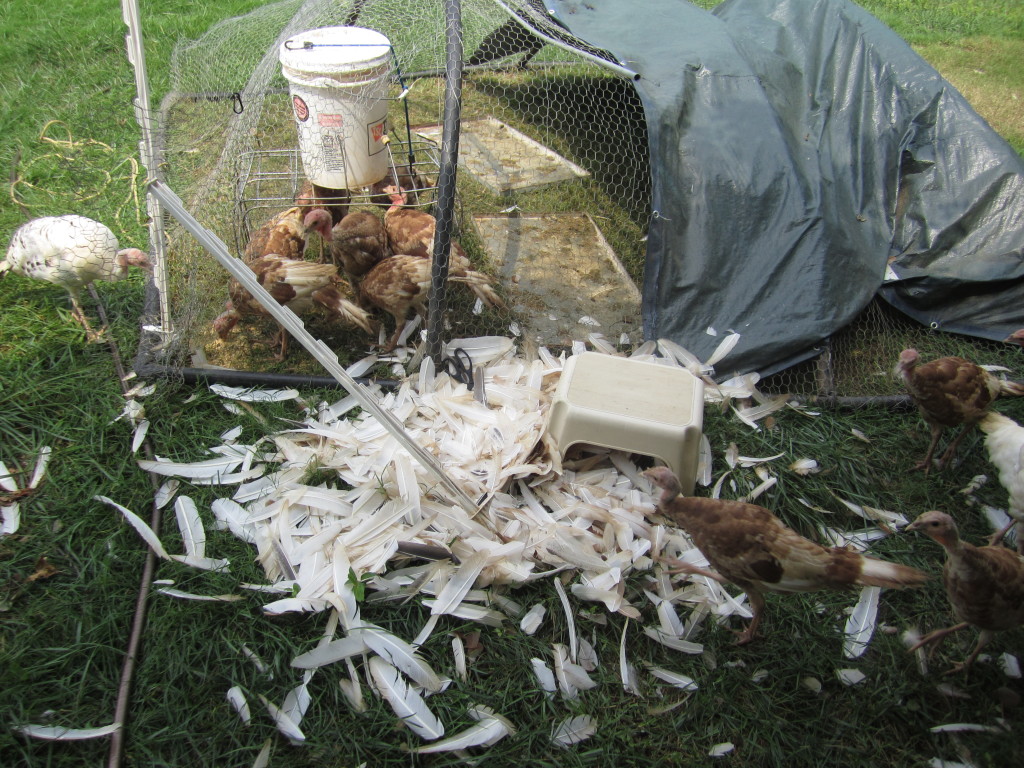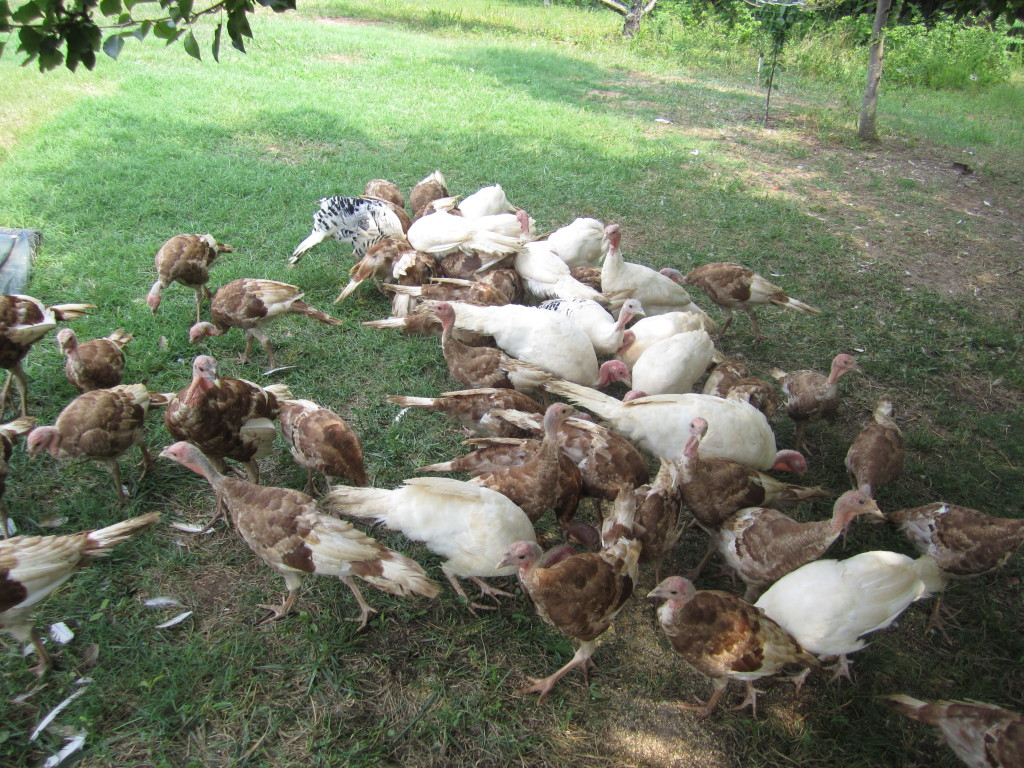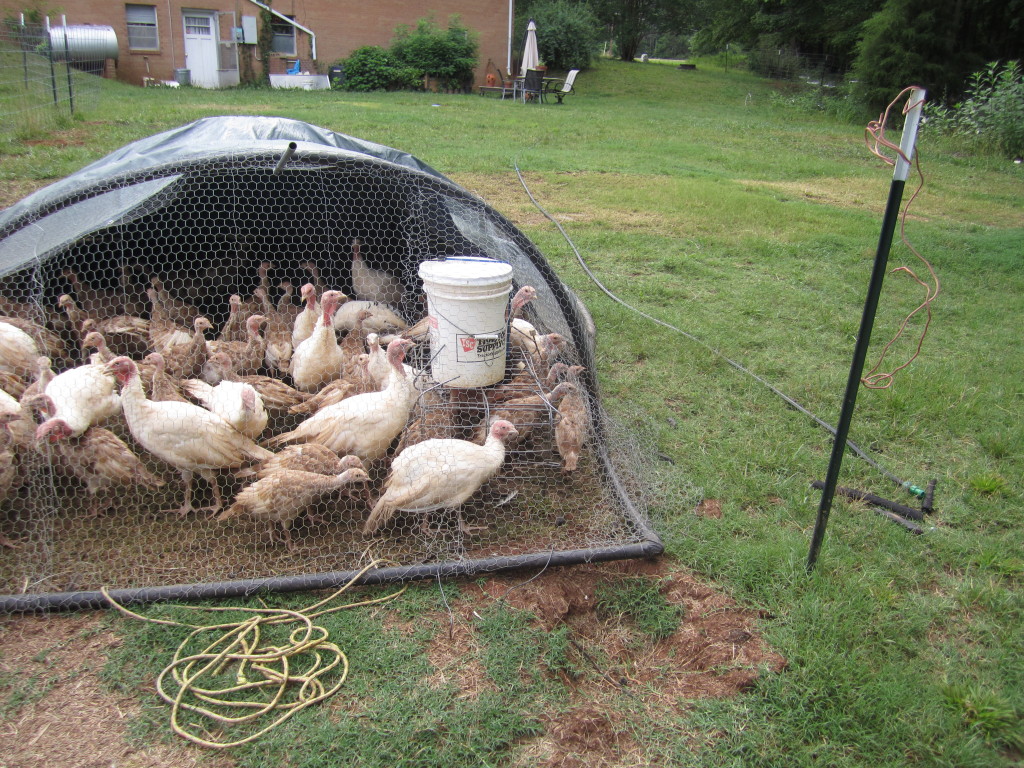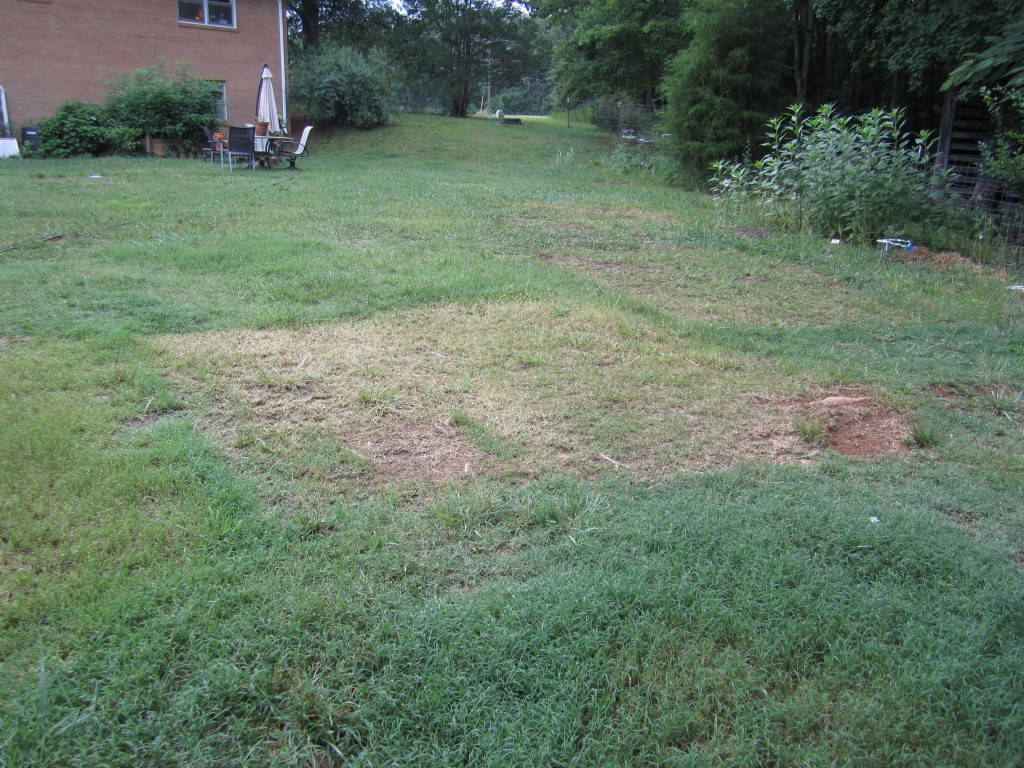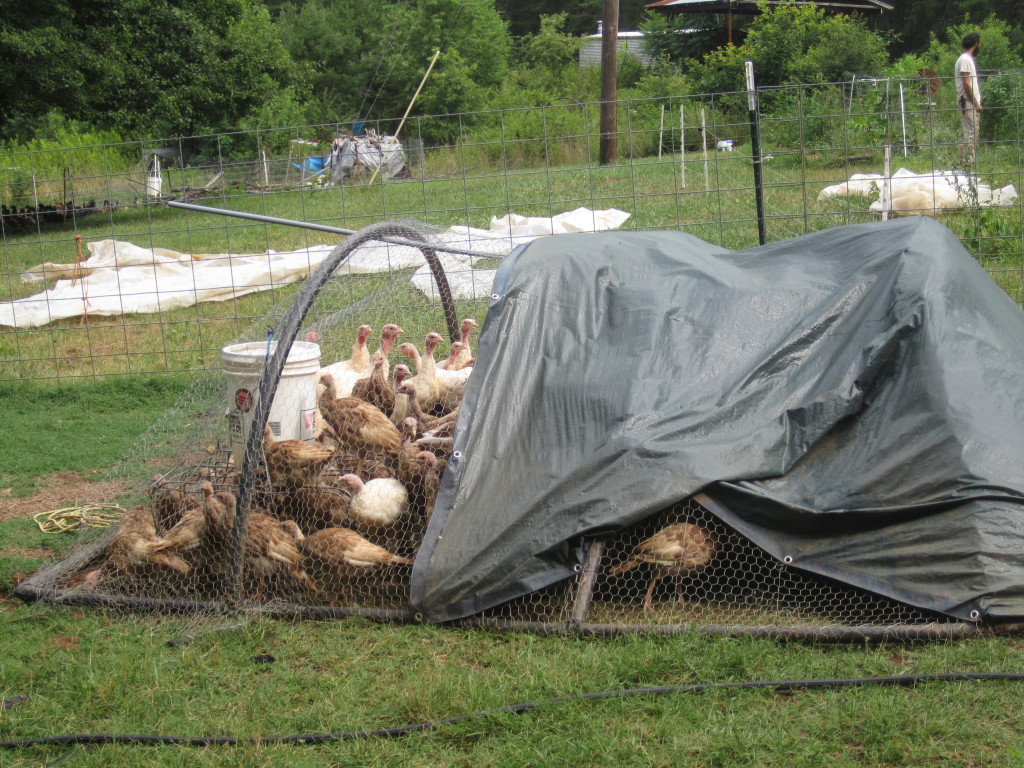Before you get worried, please know that when you clip a bird’s wings it doesn’t hurt them. You do not cut the skin, simply the feathers. It’s like cutting your hair.
We’ve shown you a video about clipping a goose’s wings, so check that out to see how it’s done. A goose’s wing feathers are super thick and you need tin snips to get through the thickness. Turkey feathers are not as thick (right now when they’re young, anyway) and I was able to clip all 66 turkey wings by myself. My strategy was simple and only took about an hour:
- Open up their house in the morning and put some food right by the entrance.
- Sit on a stool right by the entrance and wait.
- Snatch up a turkey when it trustingly walks over to snack.
- Pin its legs between your legs (watch those sharp nails!).
- Hug one side of its body up against your stomach (this keeps that wing from slipping loose and flapping around).
- Lay your non-dominant forearm over their upper back, below their next and gently stretch our their free wing with this hand.
- Use your other hand to cut the flight feathers off.
- Let them go and watch them lopsidedly try to fly away.
We usually only clip one wing of our birds, since it keeps them from flying just as well as clipping both. This way, they feel lopsided when they fly and eventually give up on trying to fly with any accuracy.
The reason we decided to clip their wings is because they kept flying over the electric fence into the garden and not knowing how to get out to join the rest of the flock. They also kept perching on the edge of the carport, which was making me feel homicidal!
And of course, after each was clipped, they were still trusting enough to follow me around all day and try to stand by me!
.:.
